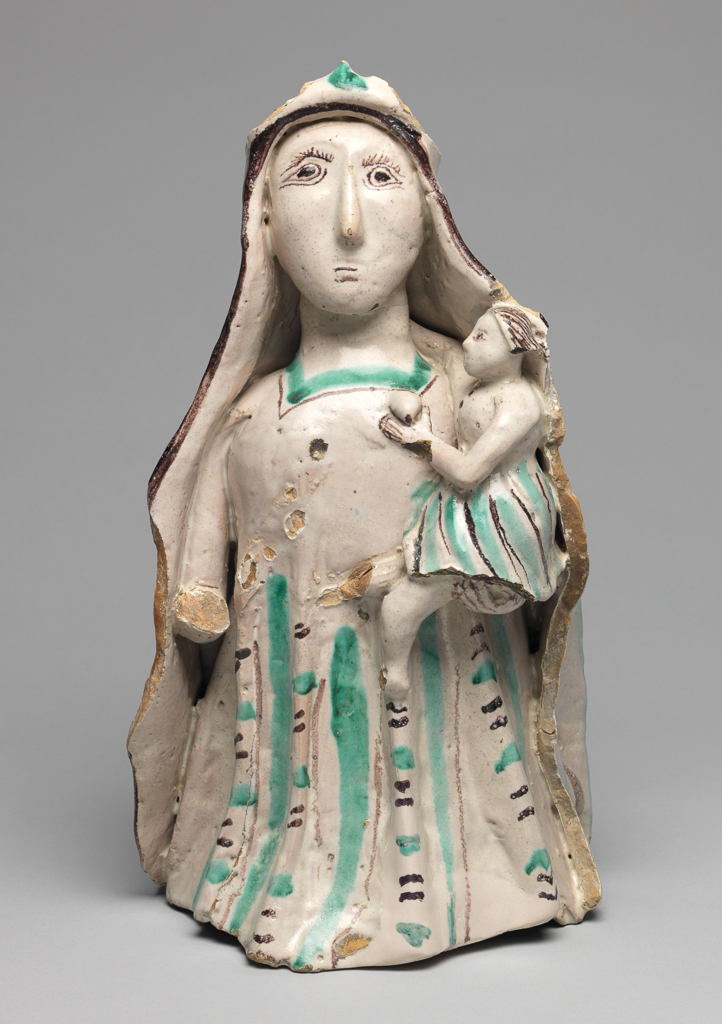
This Virgin’s wonky eyes and inscrutable expression are not at all what we associate with the heights of Italian Renaissance art. Yet this piece is a rare survival. It is a work from the very beginning of our period, and although we know that many such ceramics were produced, few of them exist today. Although it is something rather special and unusual, it’s the sort of object that often languishes unseen in museum stores.
For me, the sculpture provides a touching link with the spiritual lives of people who are not usually the focus of exhibitions. I imagine that those who paid their devotions to this little figurine would have greatly treasured it, all the more because they were probably fairly middling sorts without large amounts of money to spend on religious art.
Renaissance artists often sought to prompt spiritual feeling in beholders through a combination of idealised beauty and naturalism – we have many other works on display in the exhibition that do this very successfully. This sculpture tells a different story. It isn’t aesthetically perfect, and the figures don’t look like real people. But that doesn’t diminish its power: the intimacy between mother and child and air of pathos carries an emotional potency that is still tangible today, despite its cracks and losses.
Maya Corry, co-curator Research Associate, Domestic Devotions Project




